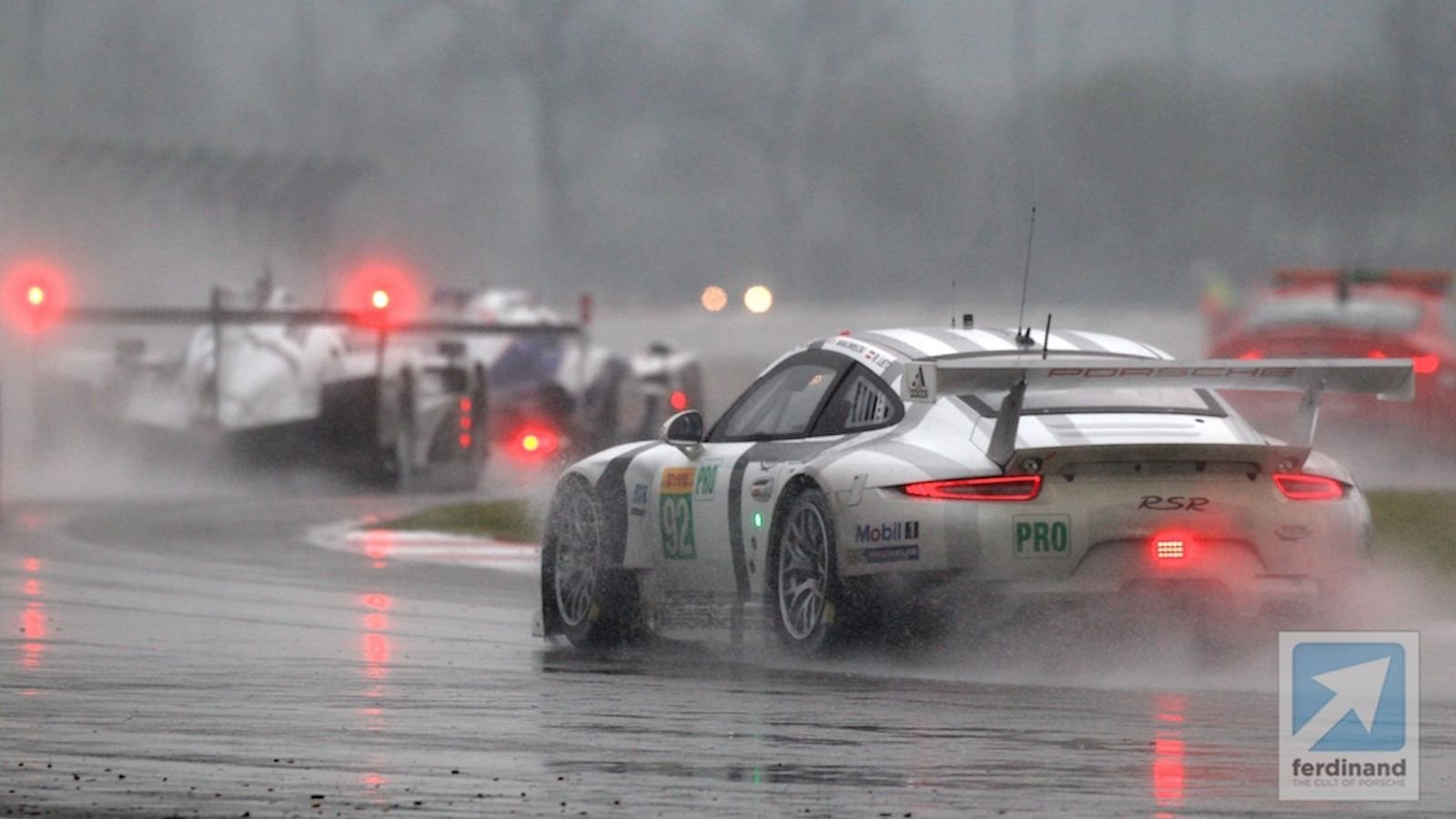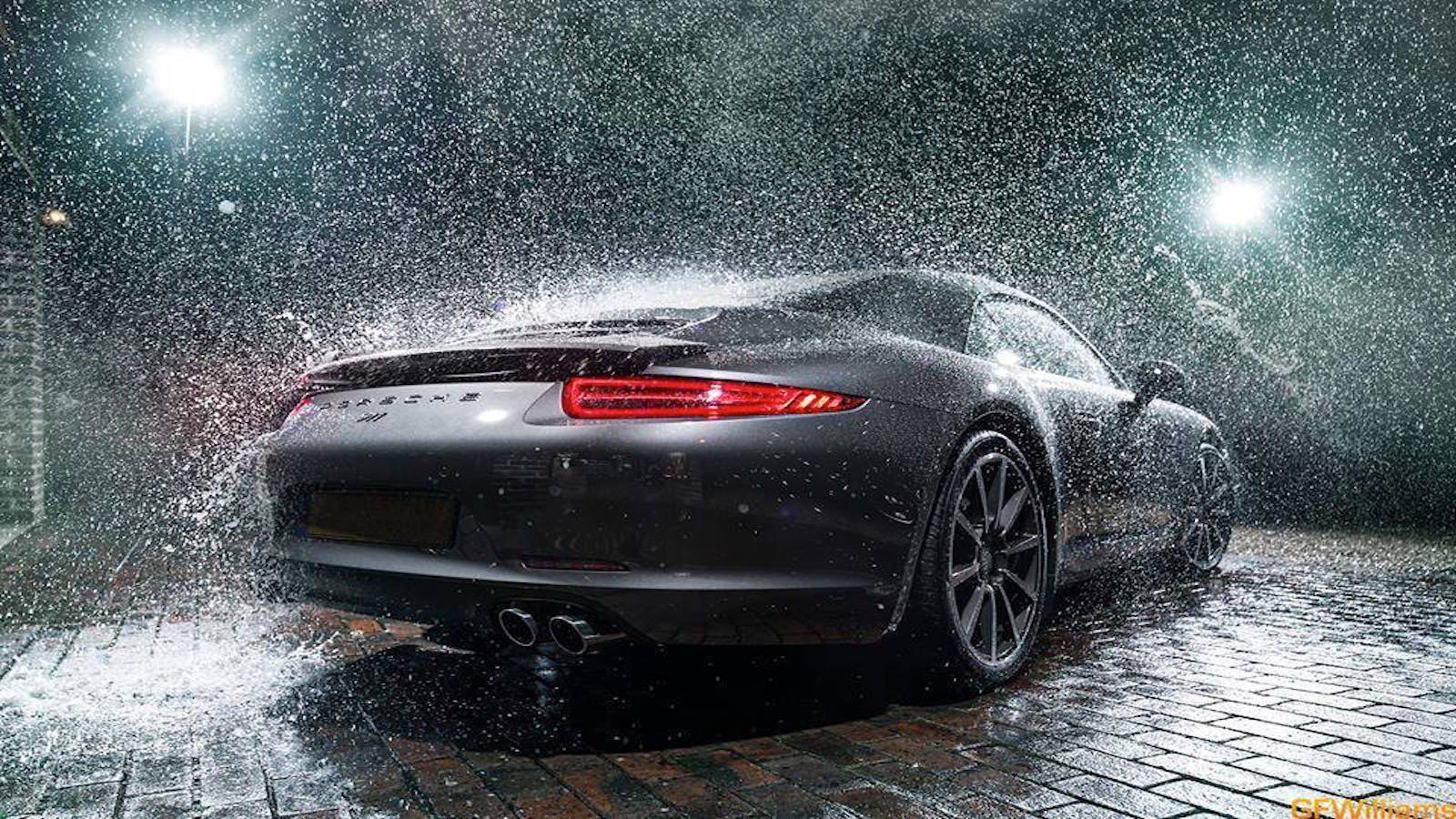Daily Slideshow: Wet Weather Setup - Basics for 911
Everyone knows rain is a challenge to drivers and mechanics alike. Setting up a car for max grip in the wet is all about softening things up and taking the edge off. Let’s take a look.












Traction Control
Porsche’s stability control and traction management systems are incredibly subtle in keeping you out of trouble. Turbocharged 911s make gobs of torque down low so it can get very slippery very quickly when you get a little too hefty with your right foot. Aftermarket traction control systems are available and can be dialed in progressively. If they’re class legal or you live in an area that rains frequently this mod can save you!
Tires
When it comes to a wet weather setup your tires are the only thing keeping you planted and on the ground. If the club or class you run in allows full dedicated wets, now would be the time to switch over. A 5-minute change in the pits to the right rubber can knock seconds off of a lap time in the wet.
Spring Rates
Spring rates need to be softer in the rain as delicate weight transfers become more critical to tire grip. Springs and dampers should be softened in the rain providing immediate feedback to the driver. By allowing the car to transition weight into the tire at a slower rate the tire has more time to settle down and grip up.
Sway Bars
Generally speaking, removing the sway bars will further aid in allowing the car to move around in a helpful way when it’s wet. The right combination will take testing, so start with the car in whatever standard configuration you normally use and go from there. How wet the track is will determine whether or not you remove your bars entirely.
Camber
Alignment is huge in the rain and due to the lack of grip, you might find less camber is advantageous. As the car has less mechanical grip there isn’t a need to dial in a huge negative number like you would in the dry. Tire pyrometers can be incredibly helpful in this department as you check for wear and temperature. Good gauges are available for a hundred dollars and can go well into the thousands depending on features.
Driver and Conclusions
Remember the setup of the car is crucial, but also, so is the driver. When it rains all of your inputs need to become extra smooth to ensure you are not upsetting the car. Treat the pedals like there are eggshells under them and be very aware of how fast you come off the brakes. 911s can be very sensitive to lifts of the throttle (heh heh) and this needs to be handled with even more care when it rains. Well, hope you enjoyed some tips for driving in the rain. More to come soon!
For help keeping your Porsche running right, please see our how-to section in the forum.
